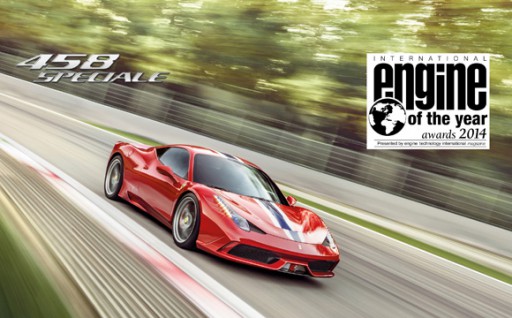As in previous years, the 2014 International Engine of the Year Awards jury was made up of many of the world’s most respected motoring journalists. In total, there were 82 jury members from 34 countries, bringing with them a wealth of experience and knowledge of today’s advanced passenger car engines.
This year, the winning engines blend high-end performance with advanced technologies that reduce emissions and substantially improve fuel economy. Forced induction designs came first place in several categories, although one naturally aspirated motor collected two awards. Judges also favoured powertrains that made inroads into weight reduction. Continuing a five-year trend, engines with small displacements again proved to be very popular, further highlighting the IC downsizing phenomenon sweeping the industry.
Reflecting the rise of powertrain electrification, there were more all-electric products for judges to assess in the Green Engine category than ever before, with key innovations coming from BMW, Tesla and Renault. Would this be the first year for an all-electric development to win an International Engine of the Year Award, where previous offerings, such as the Nissan Leaf, faltered last year?
One of the most important categories is the New Engine award, which represents the greatest powertrain development of the last 12 months. Here, there were a host of all-new BMW motors, including the i3 powertrain, as well as three-cylinder petrol and diesel units in the new Mini. But did the Bavarian car maker, which has won more International Engine of the Year Awards than any other OEM, come top with any of these creations?
The race to be crowned overall International Engine of the Year was also fiercely contested, with less than 99 points separating the top four engines.
The International Engine of the Year Awards are presented by Engine Technology International magazine, published by UKIP Media & Events Ltd. The Awards involve the voluntary participation of 82 motoring journalists from 34 countries. UKIP Media & Events Ltd receives no advertising or financial support from any car manufacturer or distributor.
The Italian presence was quite remarkable, with the Ferrari brand winning two categories.
For the fourth year running a Ferrari engine has triumphed in two categories of the prestigious International Engine of the Year Awards – Performance Engine of the Year and the Above 4-litre class. The winner on this occasion is the naturally-aspirated 4.5-litre V8 engine that equips the 458 Italia and 458 Spider and, in its most powerful guise, the 458 Speciale.
The V8 won both awards two years running in 2011 and 2012, and with the company’s naturally-aspirated, 740-hp 6262cc V12 that equips the critically acclaimed F12berlietta taking the same accolades in 2013, Ferrari’s award count is now an impressive eight in four years.
The international judging panel includes journalists from 35 nations and all praised the Ferrari V8’s unassailable blend of sophisticated engineering, power, throttle response, precision, performance and efficiency along with its peerless soundtrack.
Vittorio Dini, Ferrari’s powertrain department head, was on hand to receive the awards and commented, “This is a fantastic result for everyone at Ferrari and reflects our commitment to continually developing our engines. The 4.5-litre in the new 458 Speciale has the highest specific output ever achieved with a naturally-aspirated, road-going engine – 135 hp per litre – along with even better efficiency and the razor-sharp performance our clients expect.”
Ferrari’s V8 has reached the pinnacle of development in the 458 Speciale where the naturally-aspirated 4.5 litre develops 605 hp at 9000 rpm. As with all Ferrari special series models, the 458 Speciale boasts an array of technological innovations designed for owners looking for an even more focused sports car that offers extreme driving emotions. The innovations span the entire car and include both Ferrari patents and world firsts in engine technology, active aerodynamics and electronic controls. These characteristics, along with the finely-tuned handling balance, enable the car to reach the highest performance levels of any Ferrari V8.
Other Italian cars who classified well, although they did not win, were the Lamborghini 6.5-liter V12 (Lamborghini Aventador (700ps)), in the “Above 4-Litre” category, the Fiat 1.4-liter MultiAir turbo (Fiat Abarth Punto (165ps, 180ps), Fiat 500L (162ps), Punto (135ps), Fiat Bravo (140ps), Alfa Romeo Mito (135ps, 170ps), Giulietta (170ps), Lancia Delta (140ps), Dodge Dart (162ps)) in the “1-Liter to 1.4-Liter” category, the Fiat 1.75-liter turbo (Alfa Romeo 4C (240ps)) in the “1.4 Liter to 1.8 Liter” category, the Maserati 3.8-liter V8 turbo (Maserari Quattroporte (530ps)) in the “3-Liter to 4-Liter” section. Fiat also gained recognition in the “Green” category with its Fiat 875cc two-cylinder turbo CNG (Fiat Panda, 500L, Lancia Ypsilon (80ps)).

